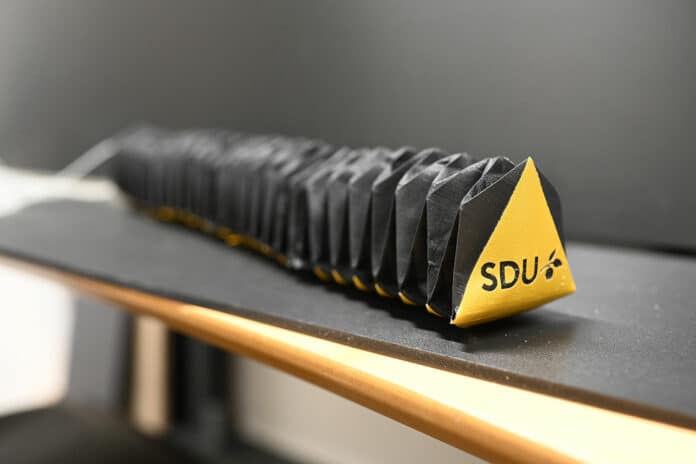Snakes have been a subject of interest for robotics researchers for a long time. Their unique and efficient locomotion, adaptive body structure, and ability to navigate through different terrains have been studied extensively.
However, there is a gap in exploring how snakes move in a straight path for maneuvering through narrow spaces. This kind of research is particularly relevant to search and rescue operations after earthquakes, where a snake-like robot equipped with sensors and cameras could assist in locating potential survivors in a disaster-struck area.
The Faculty of Engineering at the University of Southern Denmark is currently working on developing such a robot.
The research team, led by engineering PhD student Burcu Seyidoğlu and Prof. Ahmad Rafsanjani, is developing a snake robot that can move on uneven terrain and crawl through tiny passages. The robot is capable of rectilinear locomotion – that is, movement in a straight line.
Being able to move in a straight line like a snake could definitely have some useful applications, especially in scenarios requiring navigation through confined spaces where body flexion is not feasible. Search and rescue operations, field inspections, and space exploration are all areas where this technology could come in handy.
Like real snakes, the snake robot has scales on the underside that can push the body forward. The robot is made of an engineered composite textile that incorporates the world’s strongest synthetic fiber, ultra-high molecular weight polyethylene (UHMWPE). The textile is laser-cut into specific patterns, folded according to Japanese origami principles, and heat-pressed to resemble a bellow.
The snake robot moves using a series of air pockets instead of a motor. The electric pump inflates the air pockets to control the snake’s movement. In the current prototype, the pump is outside the snake, but the researchers are working on a new version where all the hardware sits inside the snake’s body.
Moreover, the robot’s construction of smaller modules makes it versatile, allowing the snake to be made longer or shorter as needed.
“The material is specifically designed for outdoor applications and demanding environments, And we designed the air pockets in the robot to be slightly air-permeable so that the air is not trapped inside and can cause delamination,” says Burcu Seyidoğlu.
The Danish snake robot is lighter and more cost-effective to build than others we’ve seen, and its textile body allows it to navigate through tight spaces more easily.
The researchers continue to work on improving the robot’s capabilities, such as incorporating an air pump and increasing its speed and turning abilities. This technology may be useful in locating survivors trapped under rubble at disaster sites or in other snaky applications.
